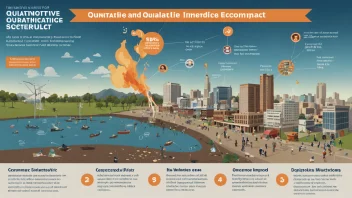Introduction
Understanding the complexities of poverty requires a deep dive into its root causes. In this article, you will learn how to identify these root causes and take meaningful steps to address them. By examining various factors that contribute to poverty, you can equip yourself with the knowledge and tools needed to make a difference in your community and beyond.
Step 1: Research the Context of Poverty
Before you can address poverty, it's essential to understand the context in which it exists. This involves:
- Gathering Data: Look for statistics on poverty levels in your area, including demographics and economic conditions.
- Understanding Historical Context: Research how historical events have shaped current poverty levels.
- Identifying Local Resources: Find out what organizations and services are available to support those in poverty.
Step 2: Conduct Interviews and Surveys
Engaging with individuals affected by poverty can provide invaluable insight. To do this:
- Prepare Questions: Develop open-ended questions that encourage discussion about their experiences.
- Ensure Privacy: Make sure that participants feel safe and secure sharing their stories.
- Analyze Responses: Look for common themes in the responses that point to root causes of poverty.
Step 3: Identify Key Root Causes
Based on your research and interviews, identify the major factors that contribute to poverty in your area. Common root causes include:
- Lack of Education: Limited access to quality education can perpetuate poverty.
- Unemployment: High unemployment rates can lead to economic instability.
- Health Issues: Poor health can limit individuals’ ability to work and provide for themselves.
- Discrimination: Systemic discrimination can prevent marginalized groups from accessing opportunities.
Step 4: Develop a Plan of Action
Once you have identified the root causes of poverty, it’s time to develop a plan to address them. Consider these steps:
- Set Clear Goals: Define specific, measurable objectives to tackle identified issues.
- Engage Stakeholders: Involve community members, local organizations, and government officials in your planning process.
- Implement Programs: Create or support initiatives focused on education, job training, healthcare access, or anti-discrimination efforts.
Step 5: Monitor and Evaluate Progress
It's important to assess the effectiveness of your actions regularly. Here’s how:
- Establish Metrics: Determine how you will measure success (e.g., number of individuals educated, jobs created).
- Collect Feedback: Regularly solicit input from community members to understand the impact of your initiatives.
- Adjust Strategies: Be prepared to modify your approach based on feedback and results.
Step 6: Advocate for Systemic Change
Addressing the root causes of poverty often requires broader systemic changes. To advocate effectively:
- Raise Awareness: Use social media and community events to inform others about poverty issues.
- Engage with Policymakers: Meet with local leaders to discuss poverty-related policies and propose changes.
- Build Coalitions: Collaborate with other organizations and groups to strengthen your advocacy efforts.
Conclusion
By following these steps, you can contribute to identifying and addressing the root causes of poverty in your community. Remember, tackling poverty is not a one-time effort but a continuous process that requires dedication, collaboration, and a willingness to learn. Together, we can make a meaningful difference and work towards a more equitable society.






